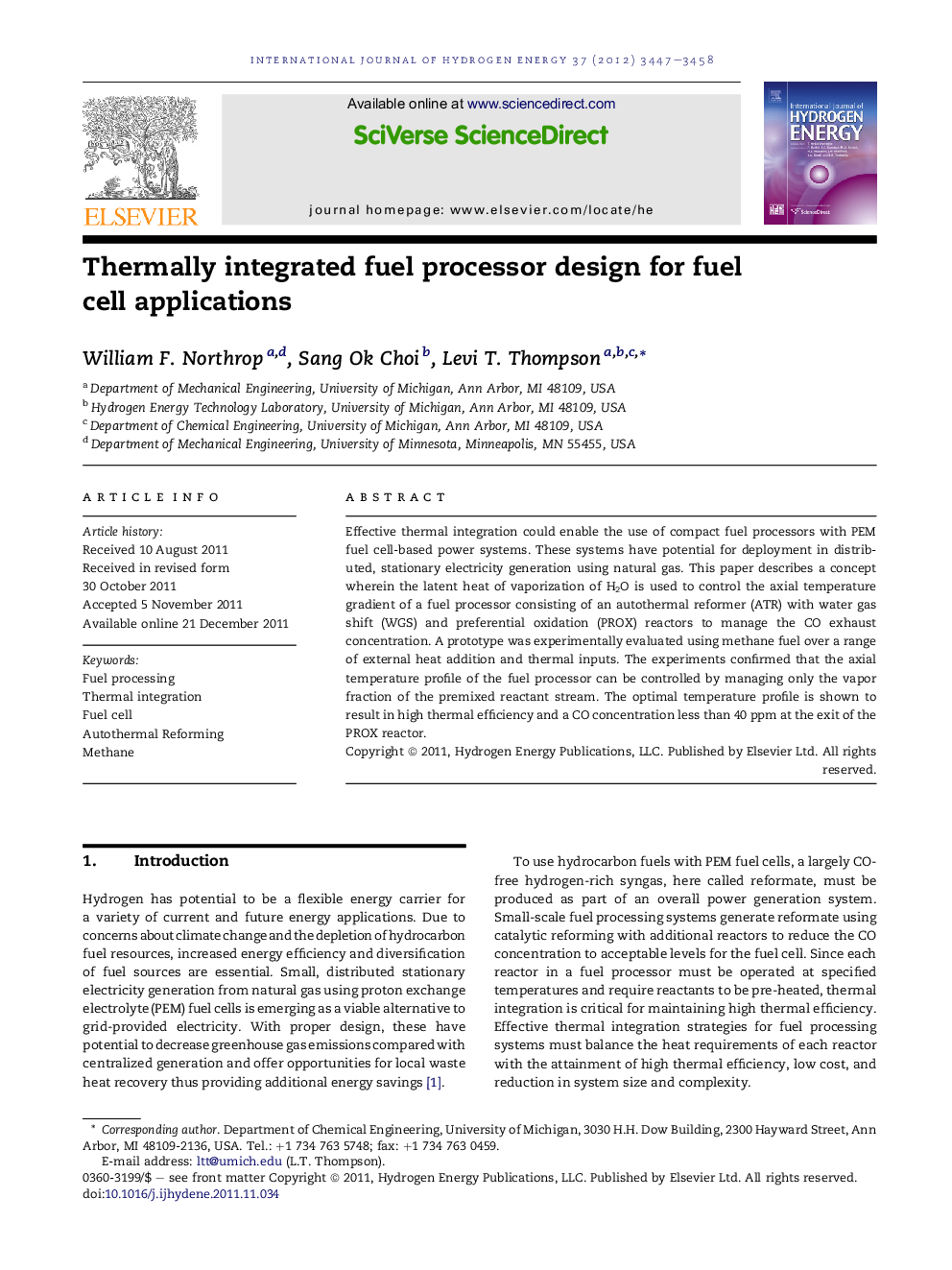| کد مقاله | کد نشریه | سال انتشار | مقاله انگلیسی | نسخه تمام متن |
|---|---|---|---|---|
| 1282353 | 1497565 | 2012 | 12 صفحه PDF | دانلود رایگان |

Effective thermal integration could enable the use of compact fuel processors with PEM fuel cell-based power systems. These systems have potential for deployment in distributed, stationary electricity generation using natural gas. This paper describes a concept wherein the latent heat of vaporization of H2O is used to control the axial temperature gradient of a fuel processor consisting of an autothermal reformer (ATR) with water gas shift (WGS) and preferential oxidation (PROX) reactors to manage the CO exhaust concentration. A prototype was experimentally evaluated using methane fuel over a range of external heat addition and thermal inputs. The experiments confirmed that the axial temperature profile of the fuel processor can be controlled by managing only the vapor fraction of the premixed reactant stream. The optimal temperature profile is shown to result in high thermal efficiency and a CO concentration less than 40 ppm at the exit of the PROX reactor.
Figure optionsDownload as PowerPoint slideHighlights
► We detail a novel thermal integration strategy for use in a compact fuel processor.
► Prototype fuel processor tested using methane as fuel.
► The axial temperature profile was controlled by the heat of water vaporization.
► High methane conversion efficiency was achieved over range of thermal inputs.
► Output CO concentration was suitable for PEM fuel cell applications.
Journal: International Journal of Hydrogen Energy - Volume 37, Issue 4, February 2012, Pages 3447–3458